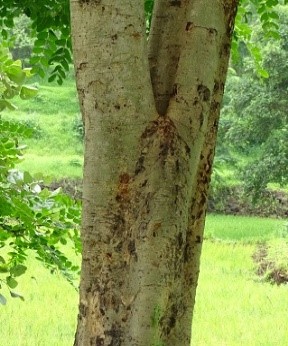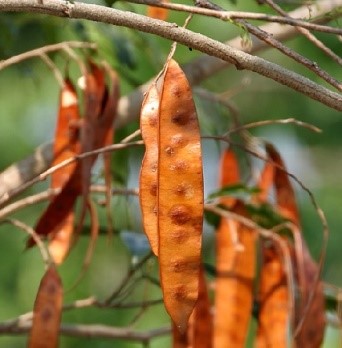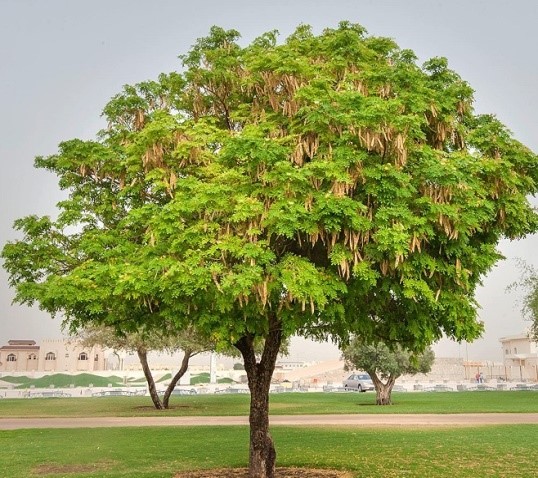Trees
Albizia procera (Roxb.) Benth
Albizia procera (Roxb.) Benth
Description :
A
fast growing, deciduous tree 12 to 30 m tall. Diameters to 1 m have been
recorded this crown is open, and umbrella-like. Foliage is feathery-like and
the leaves are compound, Leaflets are small, 3 cm long. The bark is smooth,
light yellowish or greenish grey. It peels in flakes which are red on the
undersides. The fragrant flowers are yellow or greenish-yellow and occur in
loose clusters, appearing between June and August. The pods are narrow flat and
about 15 cm long. They are dark red brown when ripe. The pods mature in
September. It can be reproduced both from seed and by vegetative means. Seed
can be obtained from Bhagat reservoir plantation Changa Manga irrigated
plantation and Jallo Park near Lahore. It is relatively fast growing. Yields of
10 m3/ha/yr, depending on the site, have been recorded for rotations
of 30 years. Growth in irrigated plantations has been excellent. Grain is figured,
coarse having Sapwood is whitish, heartwood is brown with streaks of darker and
lighter color, which is Very strong and resilient with a specific gravity of
0.69 and a calorific value of 4800 kcal/kg.
Distribution :
This
tree is native to central and southern India, Bangladesh and Burma. In Pakistan
it has been planted in the Punjab and KP. An intolerant tree that grows on a
variety of moist sites. It does well in low lying, moist savannas and tolerates
saline and sodic conditions. It requires a summer precipitation zone of 500 to
1000 mm/yr. It prefers a sub-humid, warm, sub-tropical climate with a
temperature range of 1 to 45°C and an elevation range of 0 to 1200m. Grazing
can be a problem with this tree. Seedlings are susceptible to frost damage. In
Pakistan it has no known pests or diseases.
Uses :
This tree is adapted to a
variety of moist sites and soils. It is well suited to alkali soils. It
coppices readily. It is a good nitrogen fixer. It could be a good tree for
irrigated plantations. With care this would be a useful farm forestry tree.
Young plants need protection from grazing and frost. It also has potential as a
tree for saline, sodic sites. Can also be used for fodder, fuel, nitrogen
fixing, poles and construction, agricultural implements, shade, furniture,
tannin, and apiculture.



